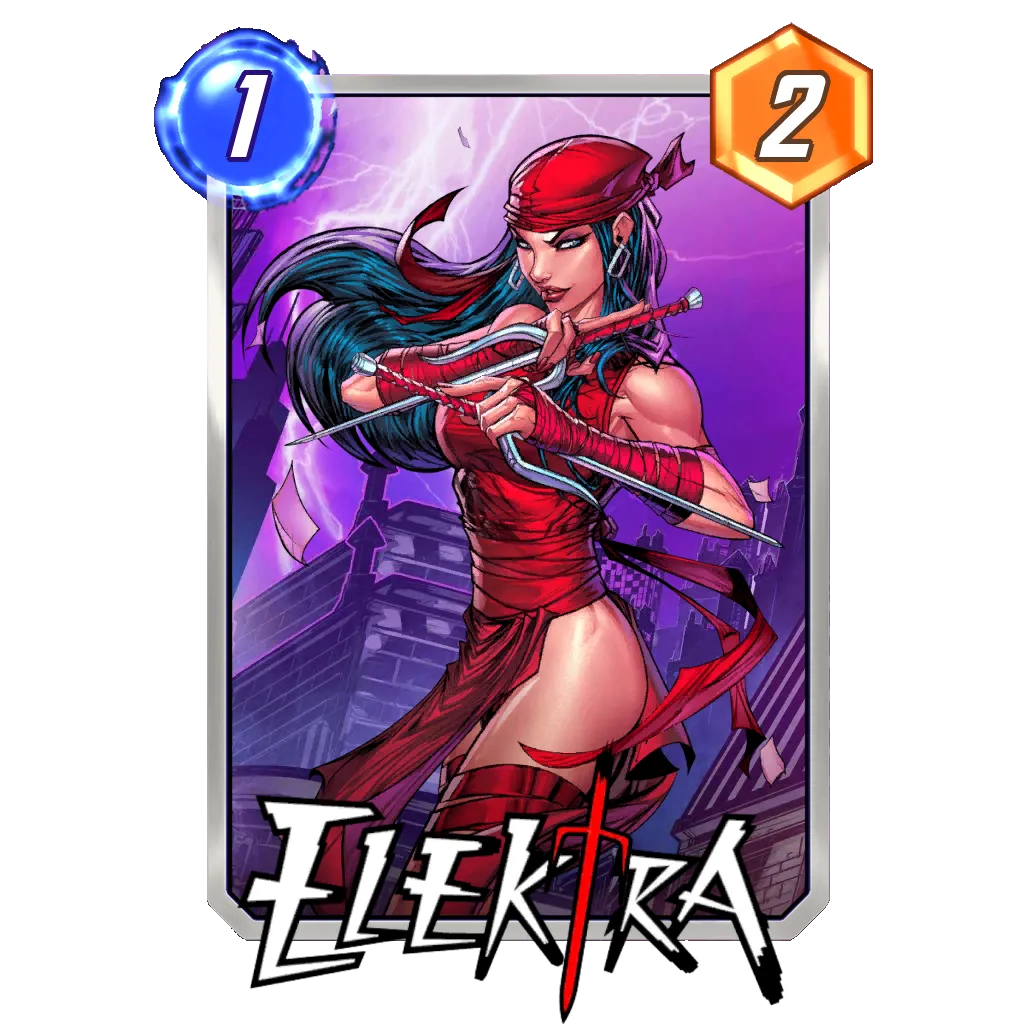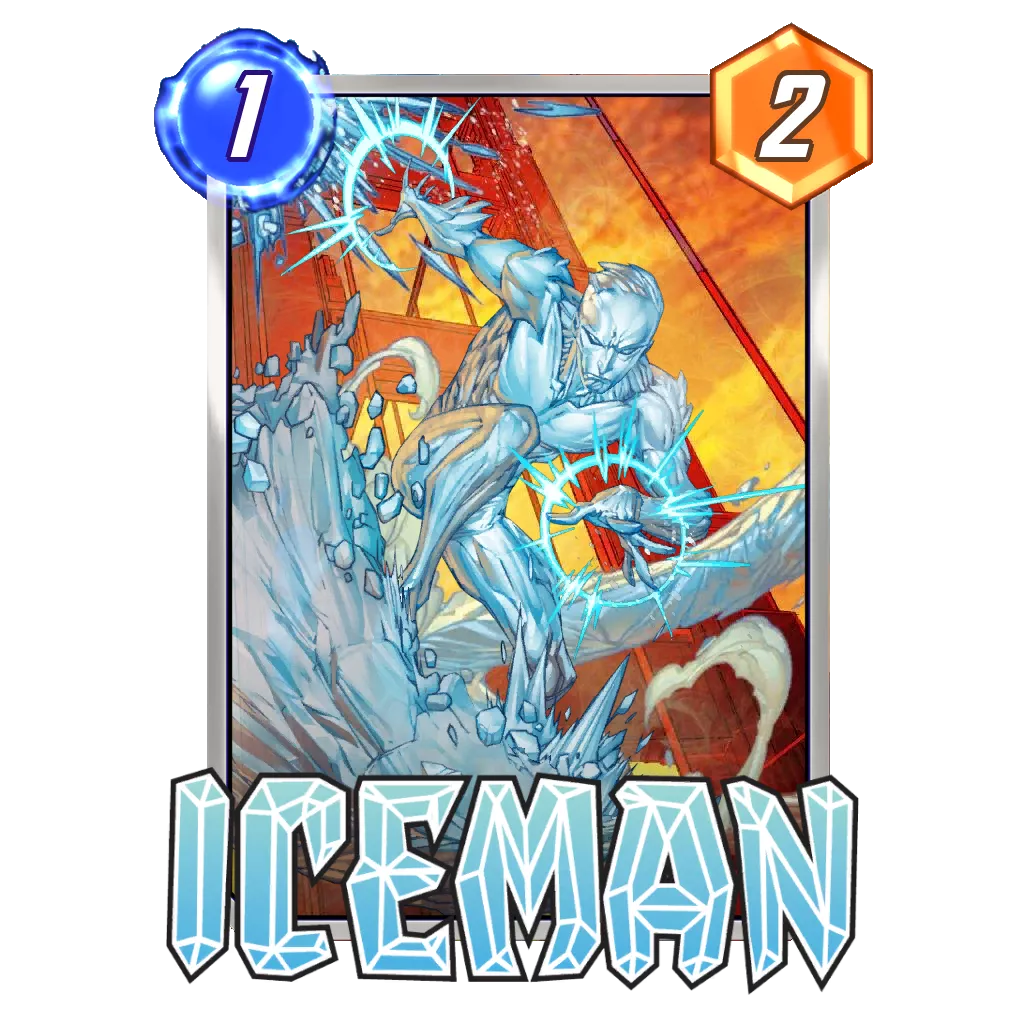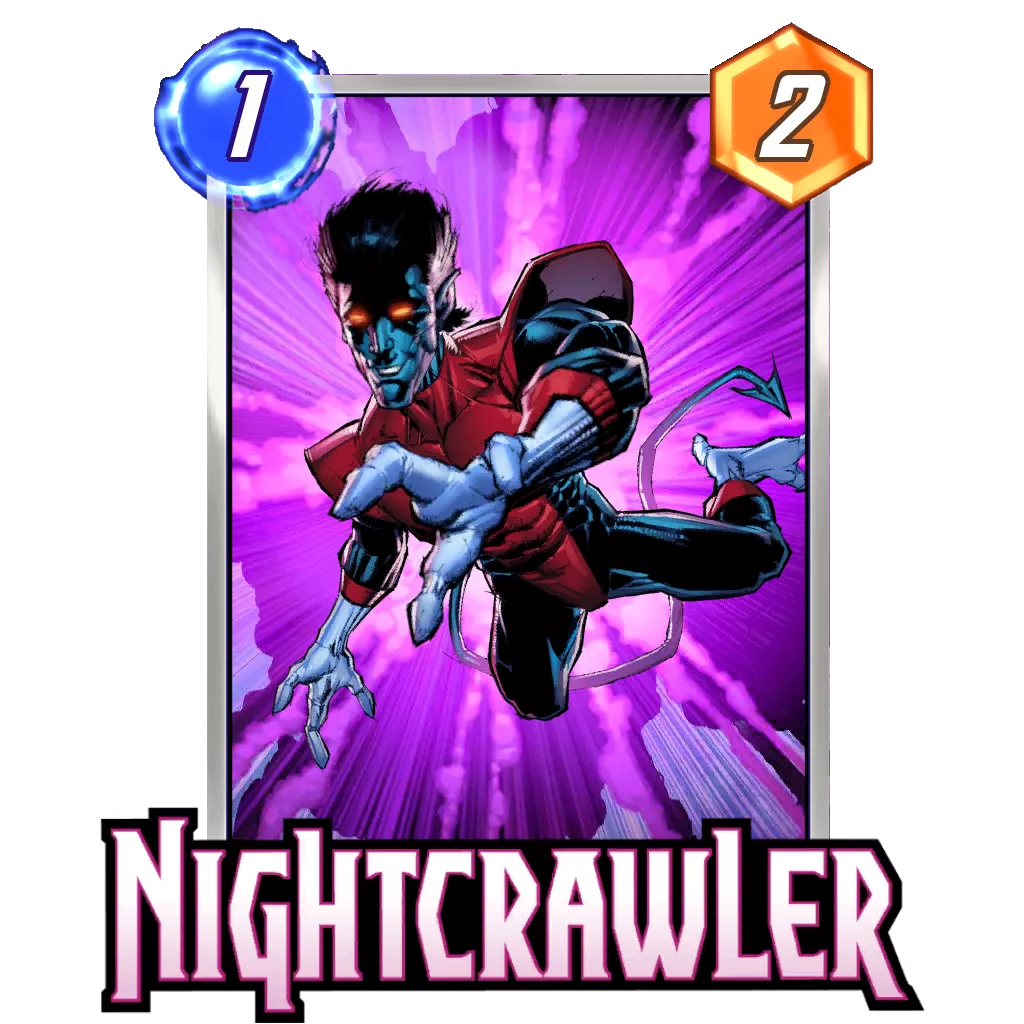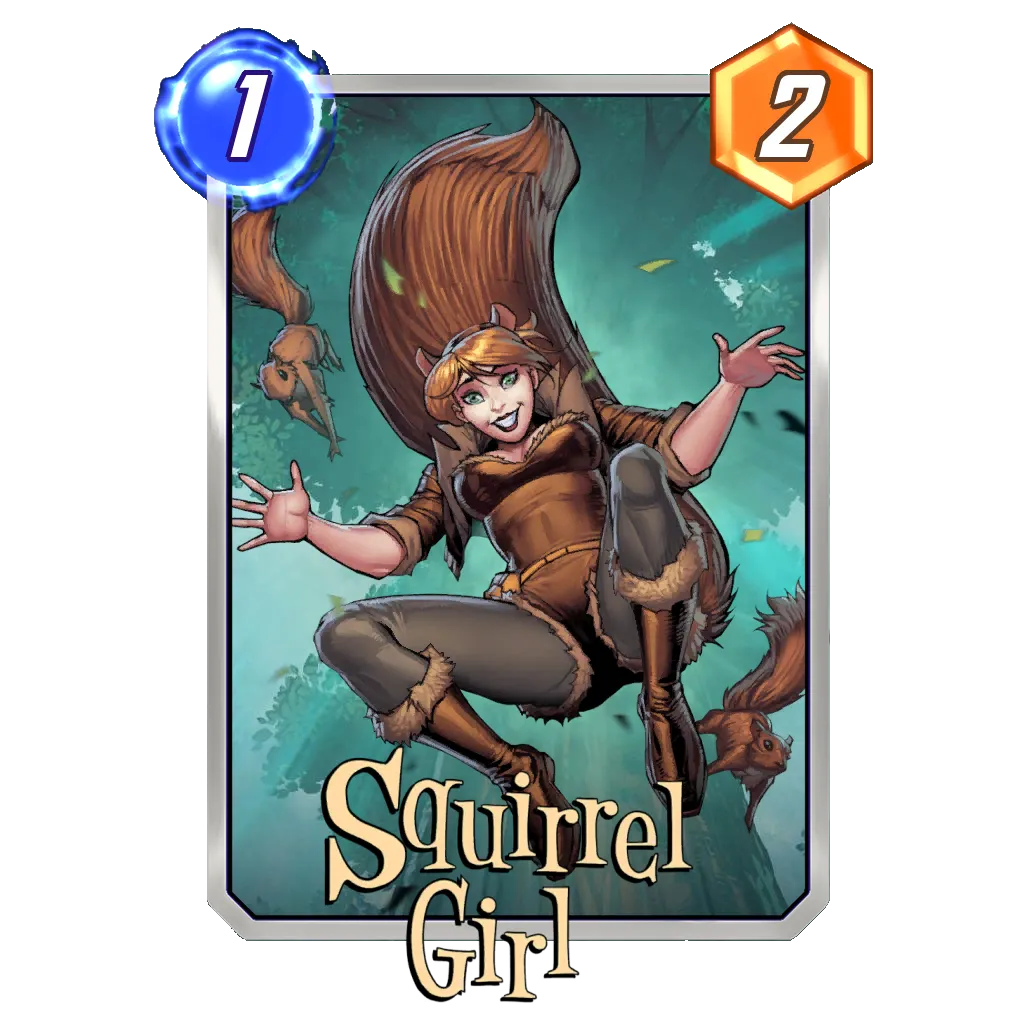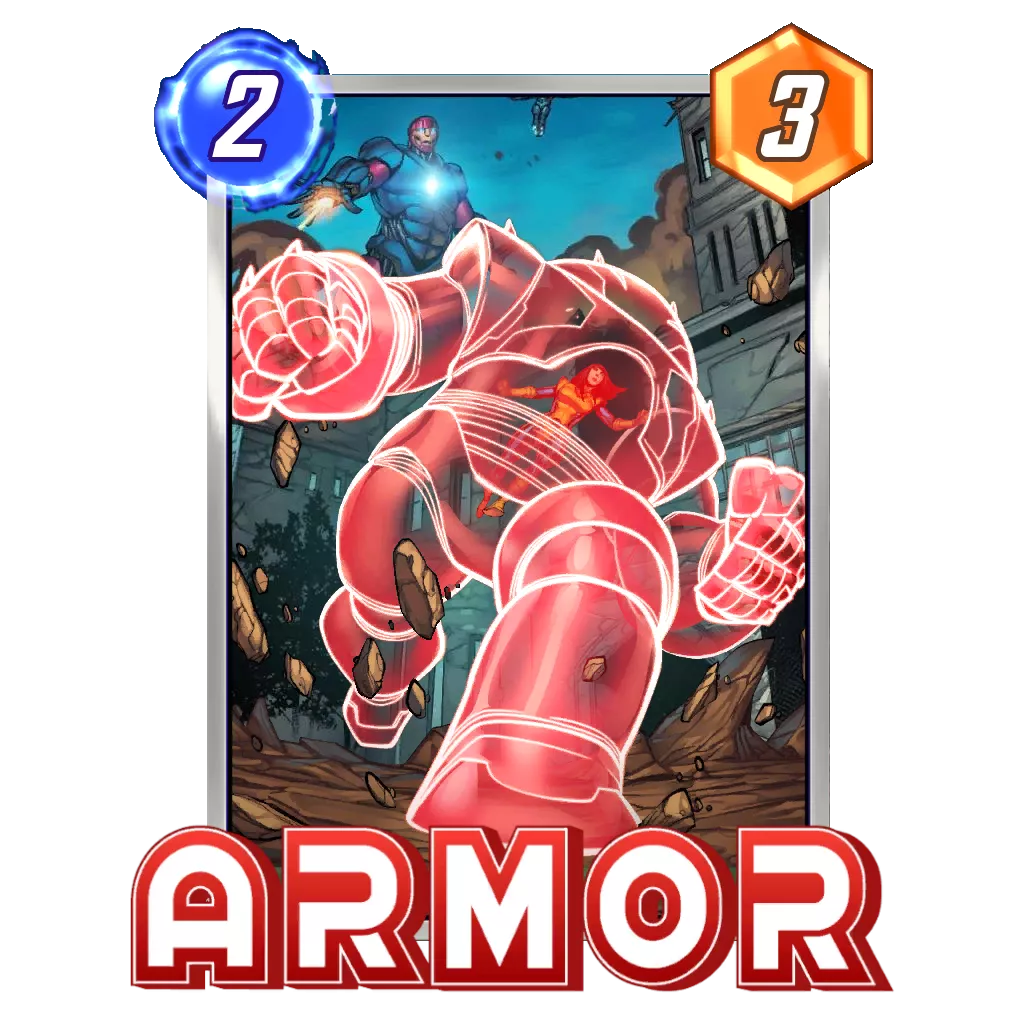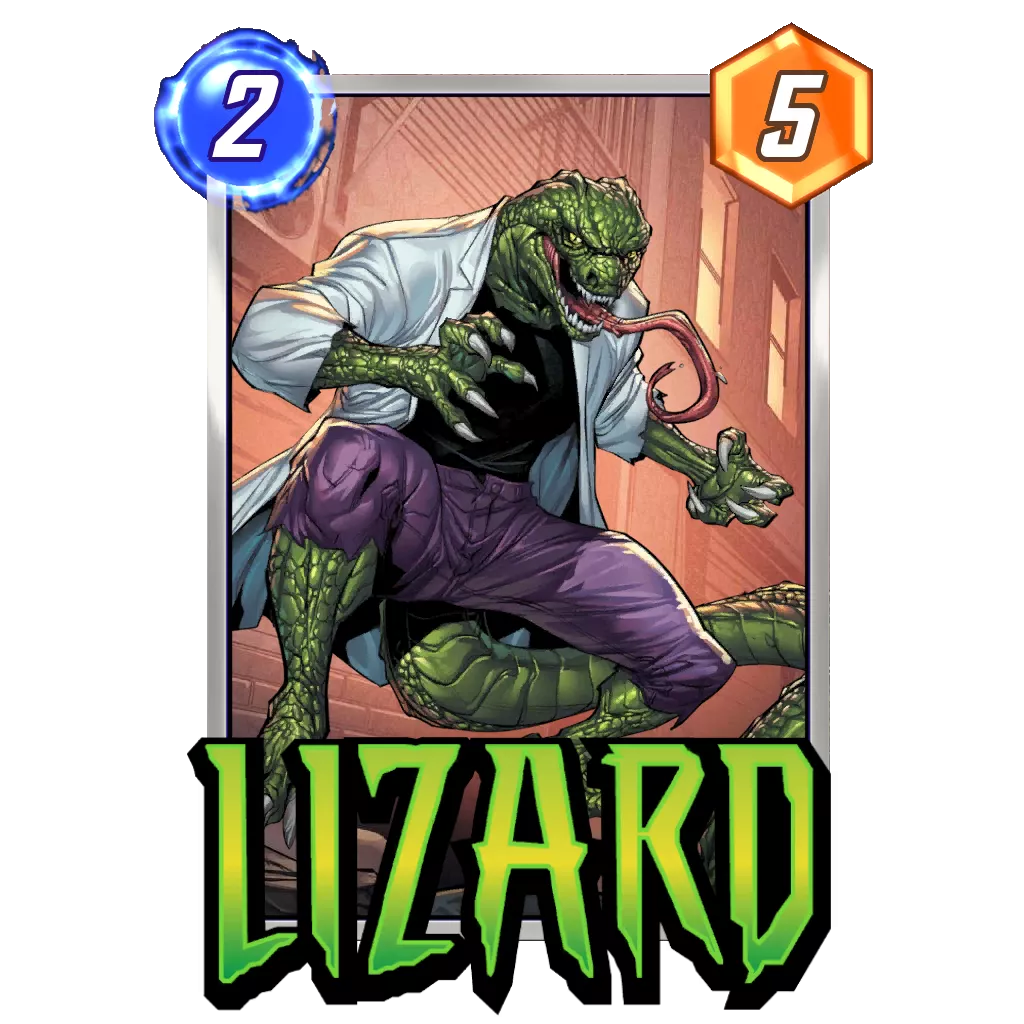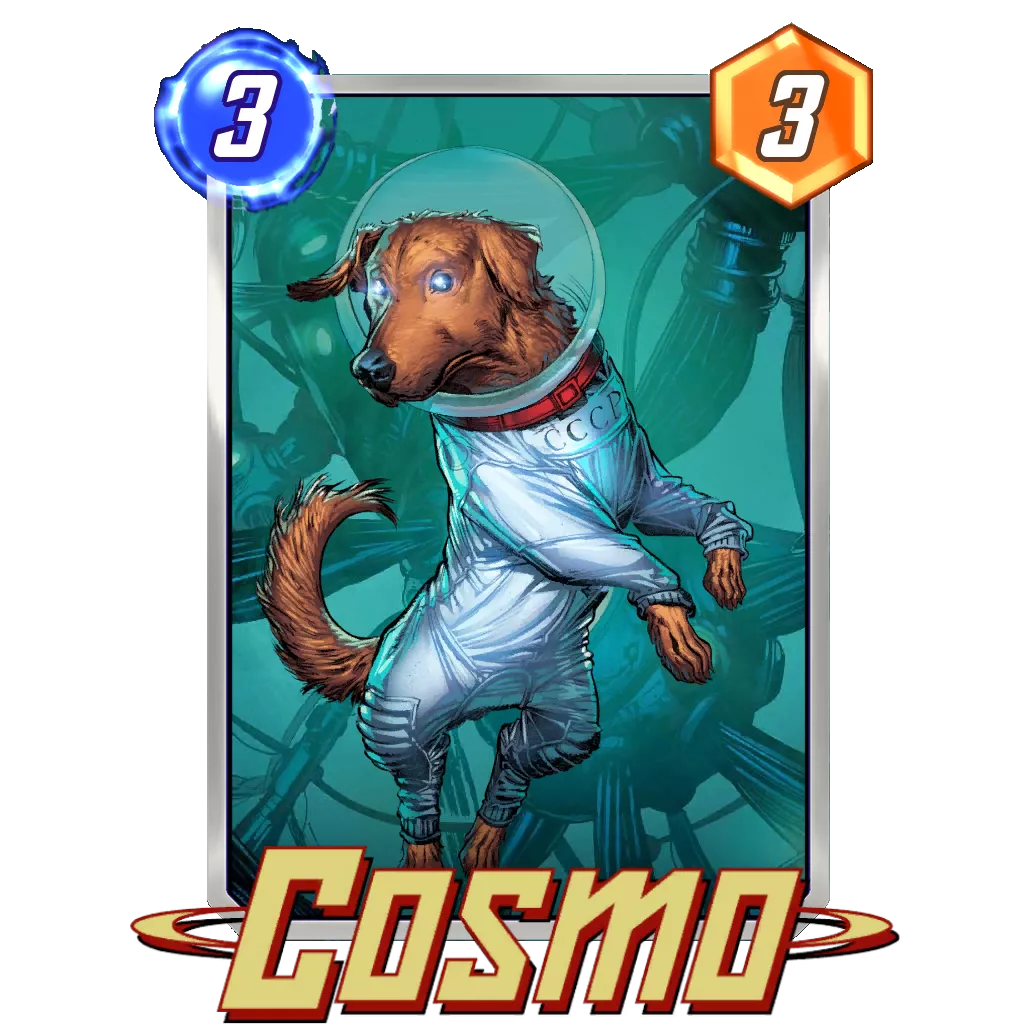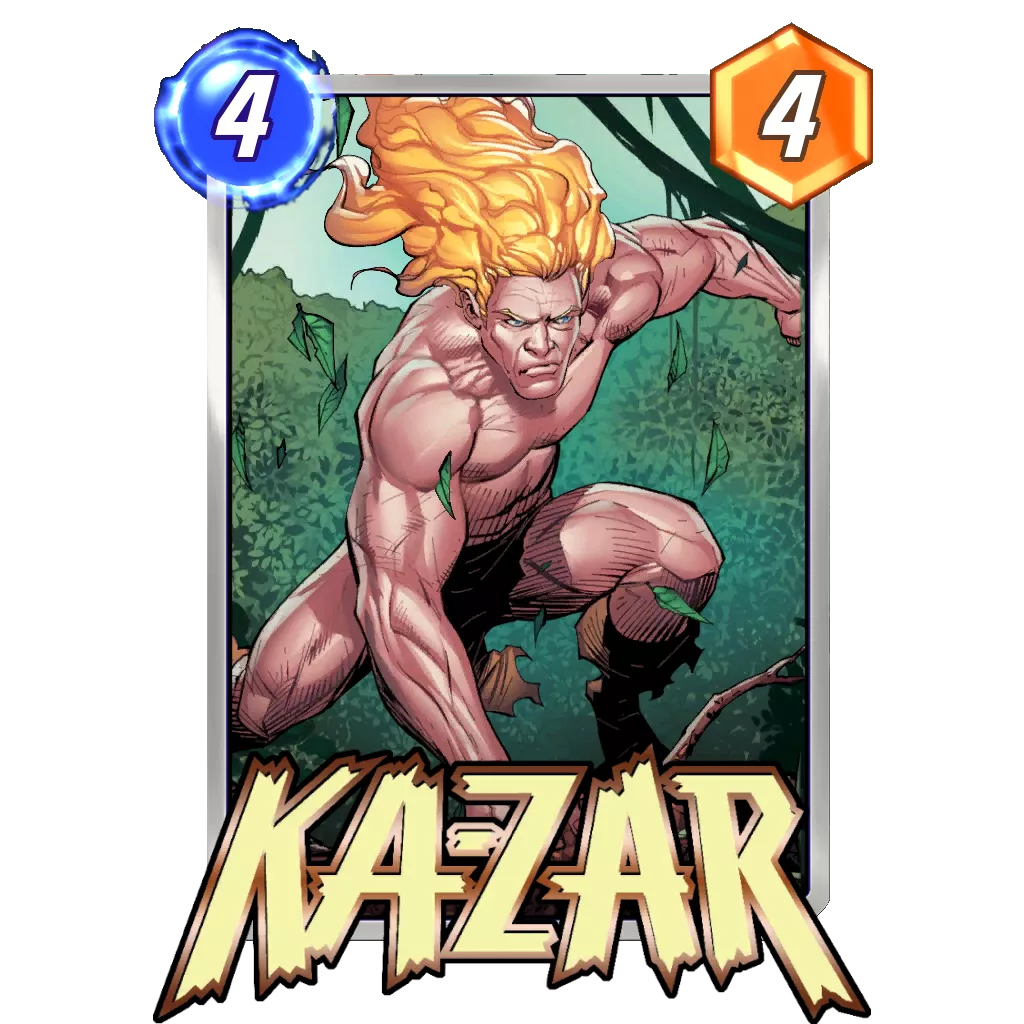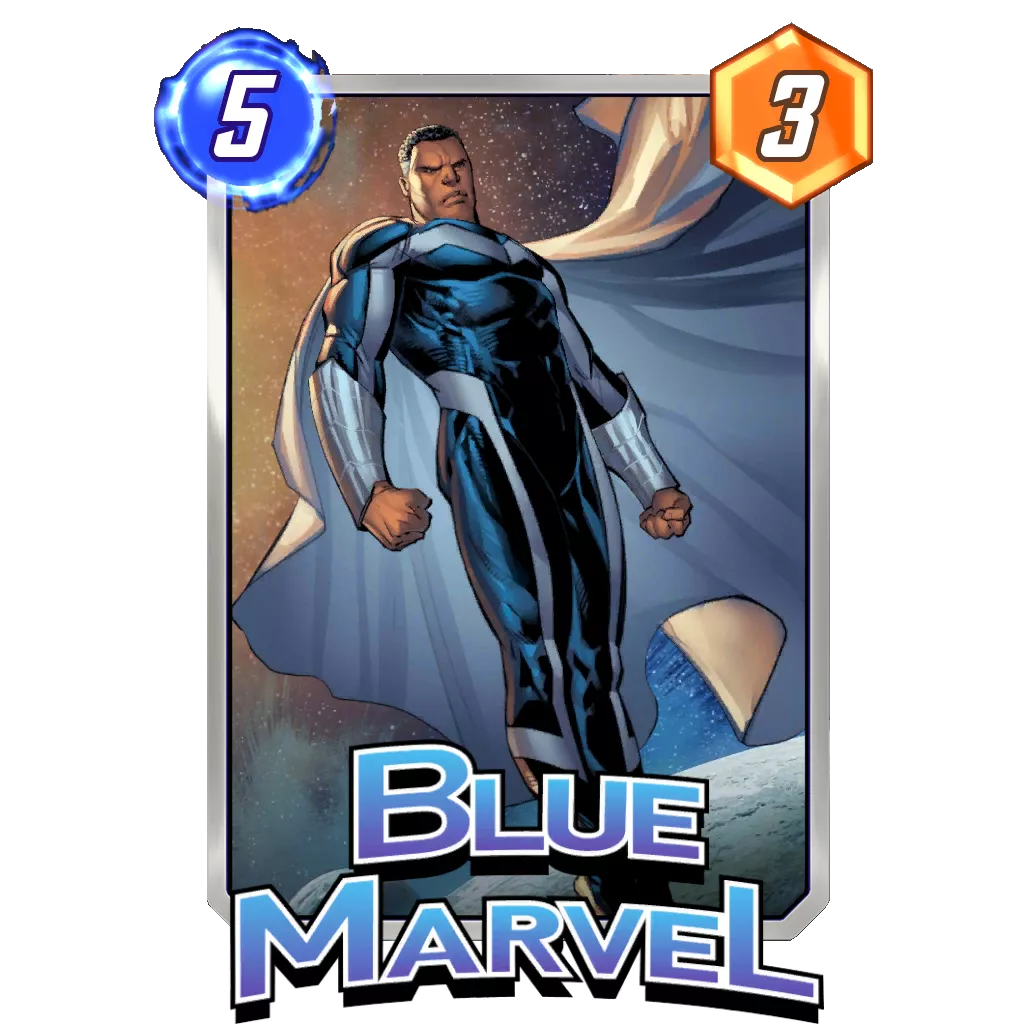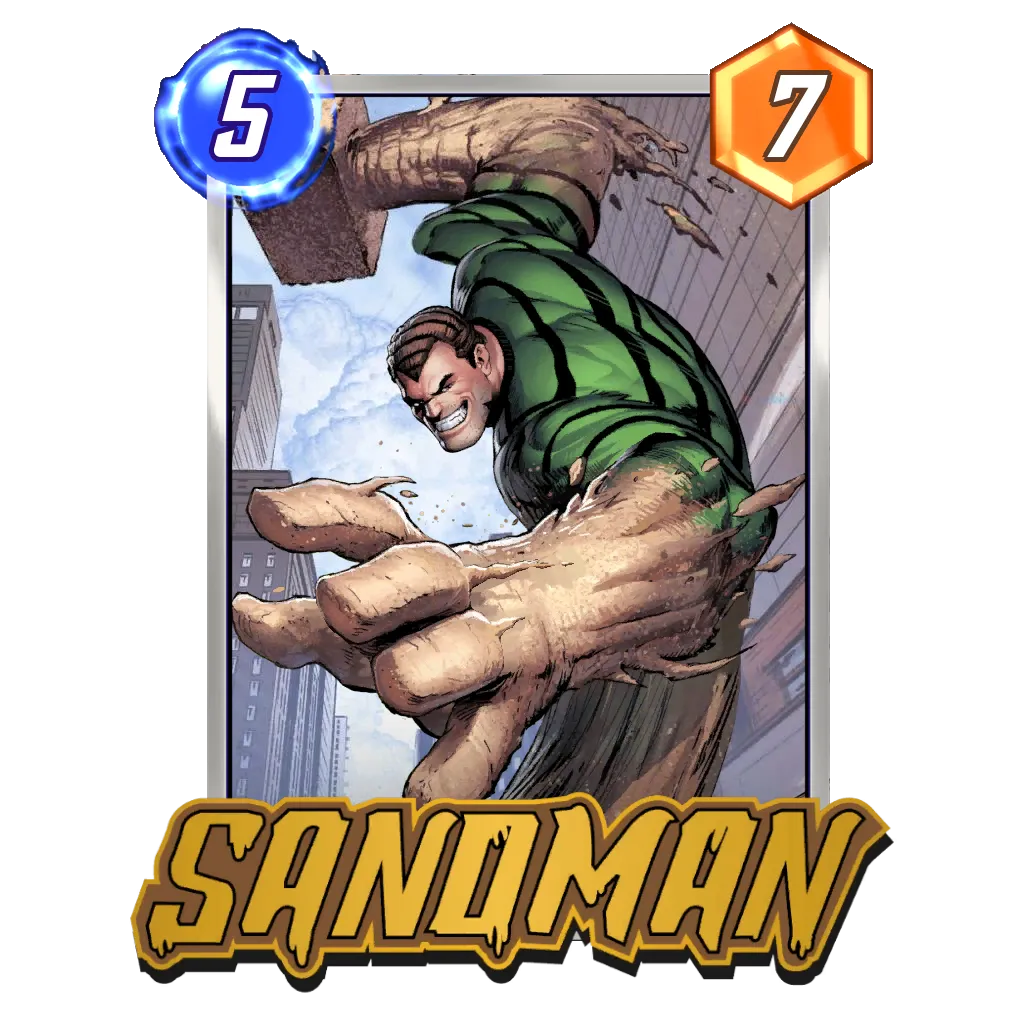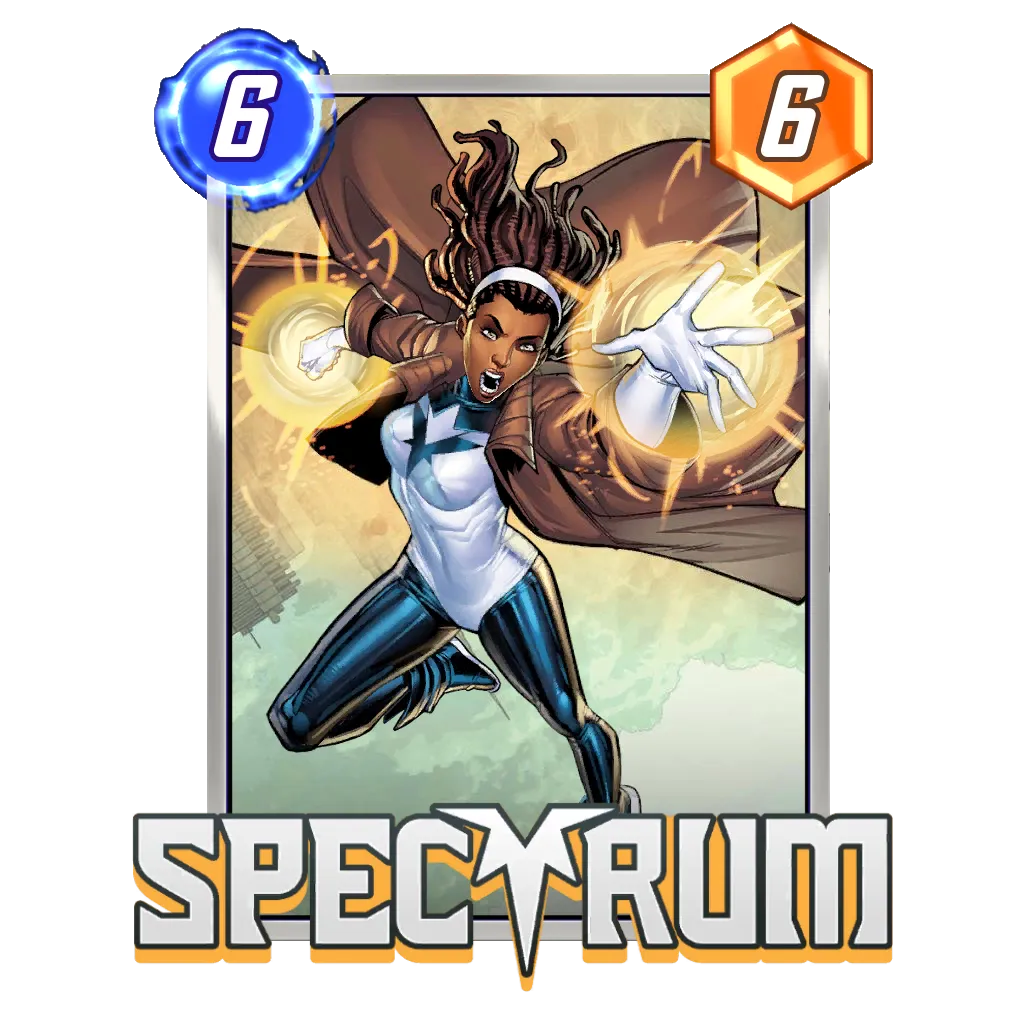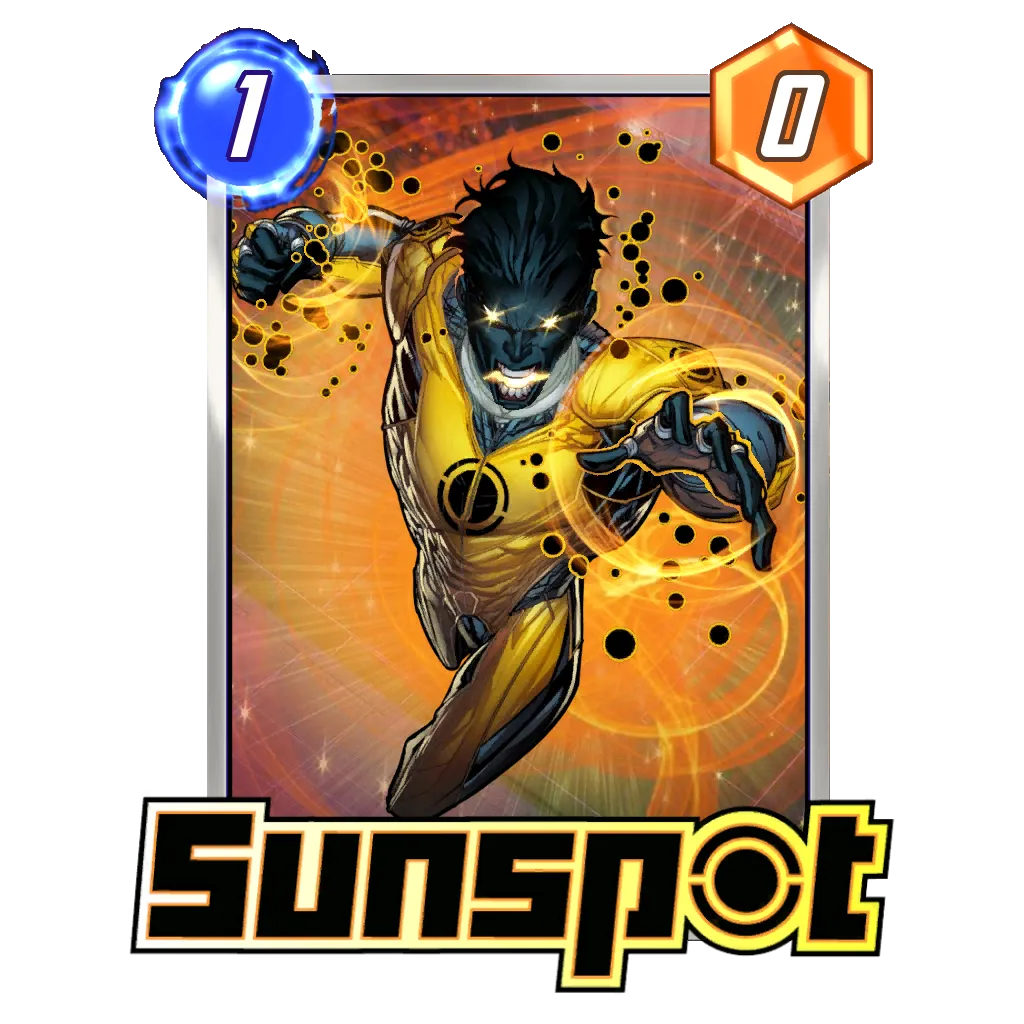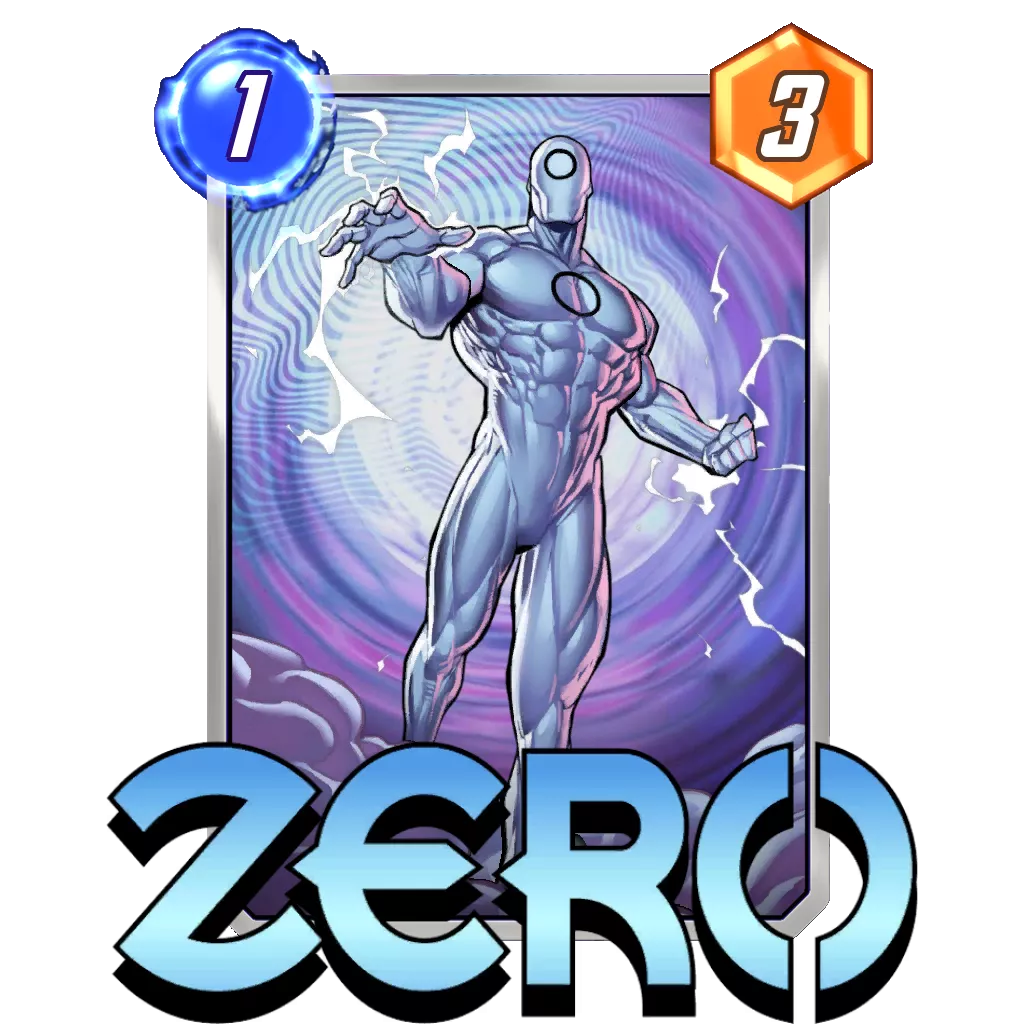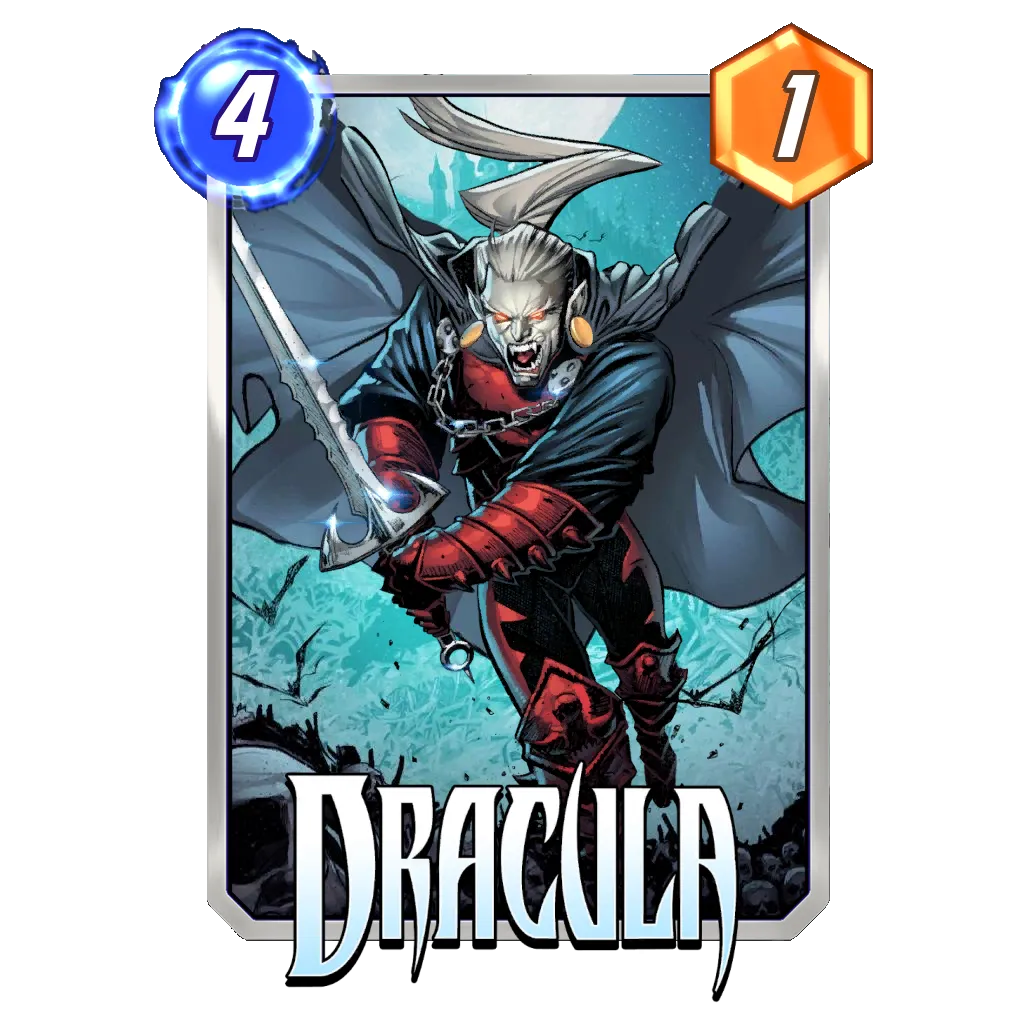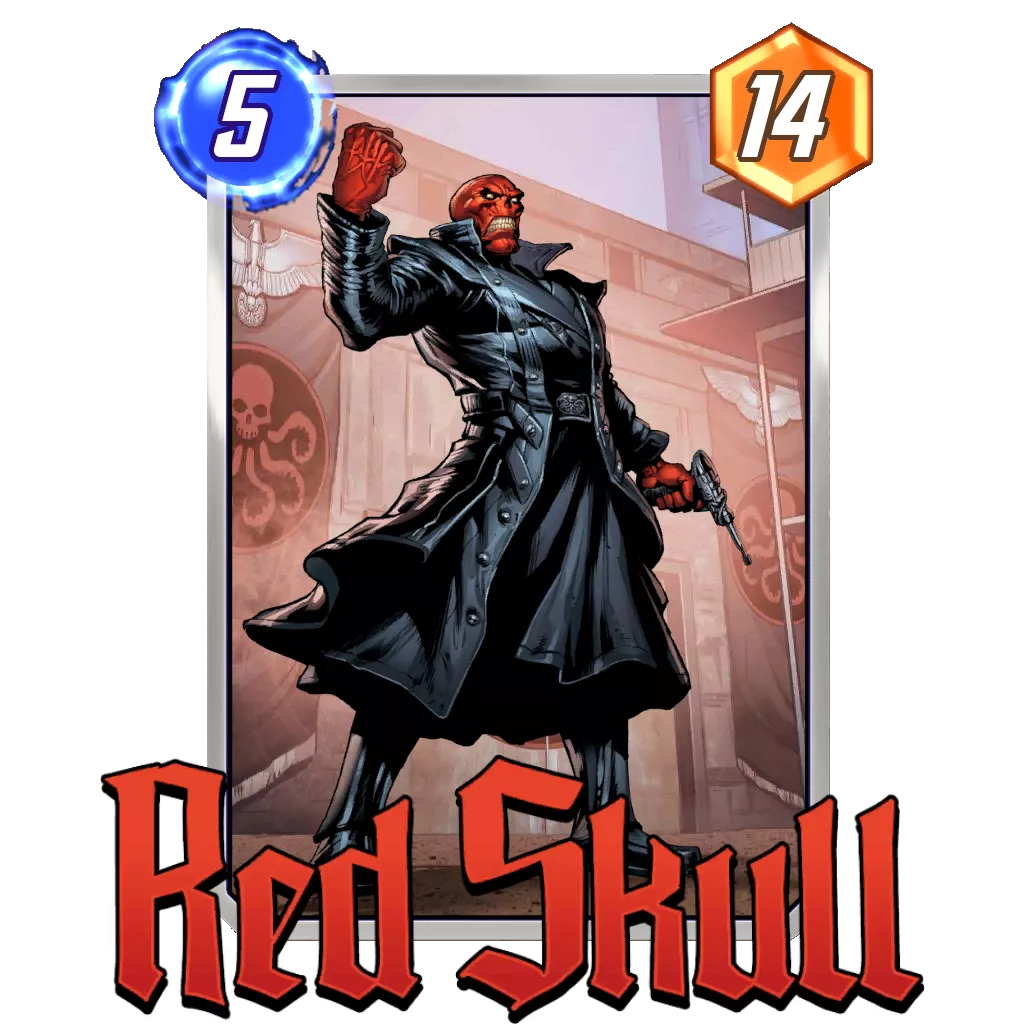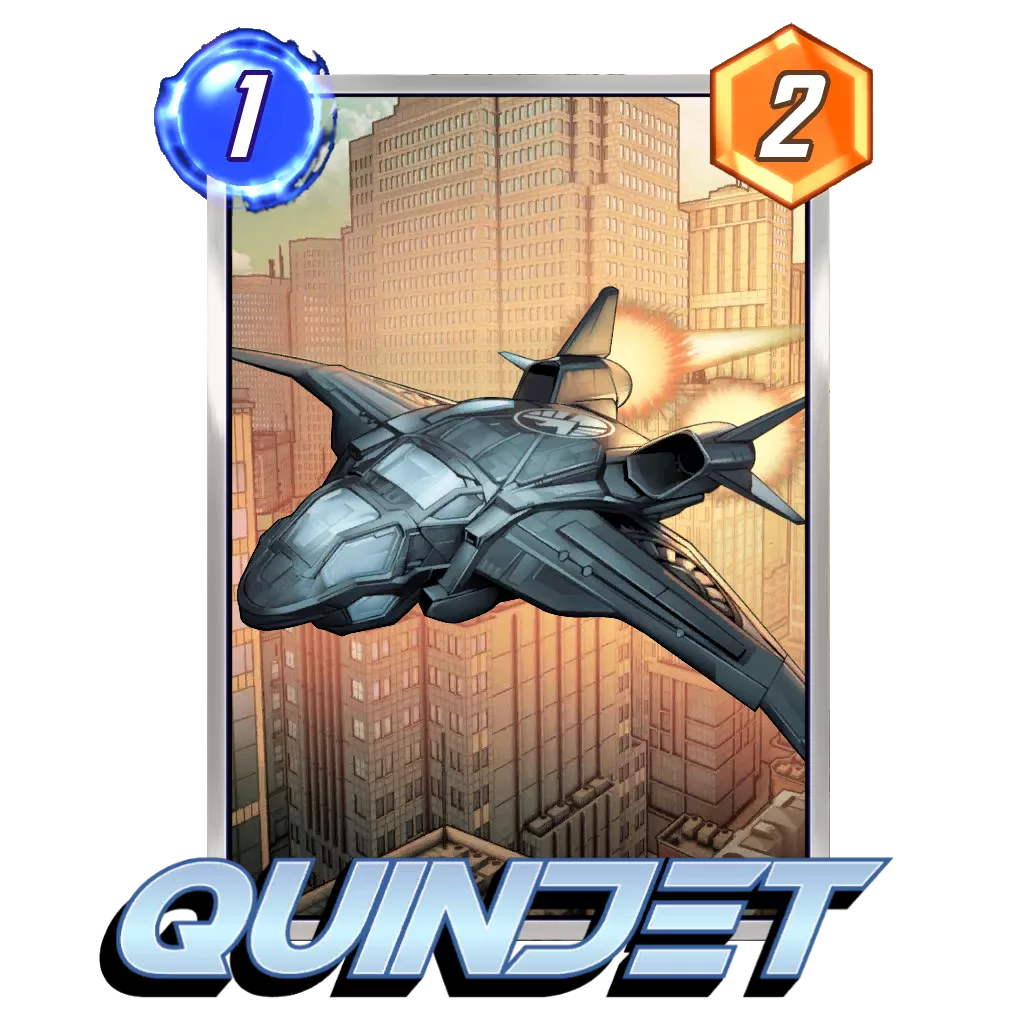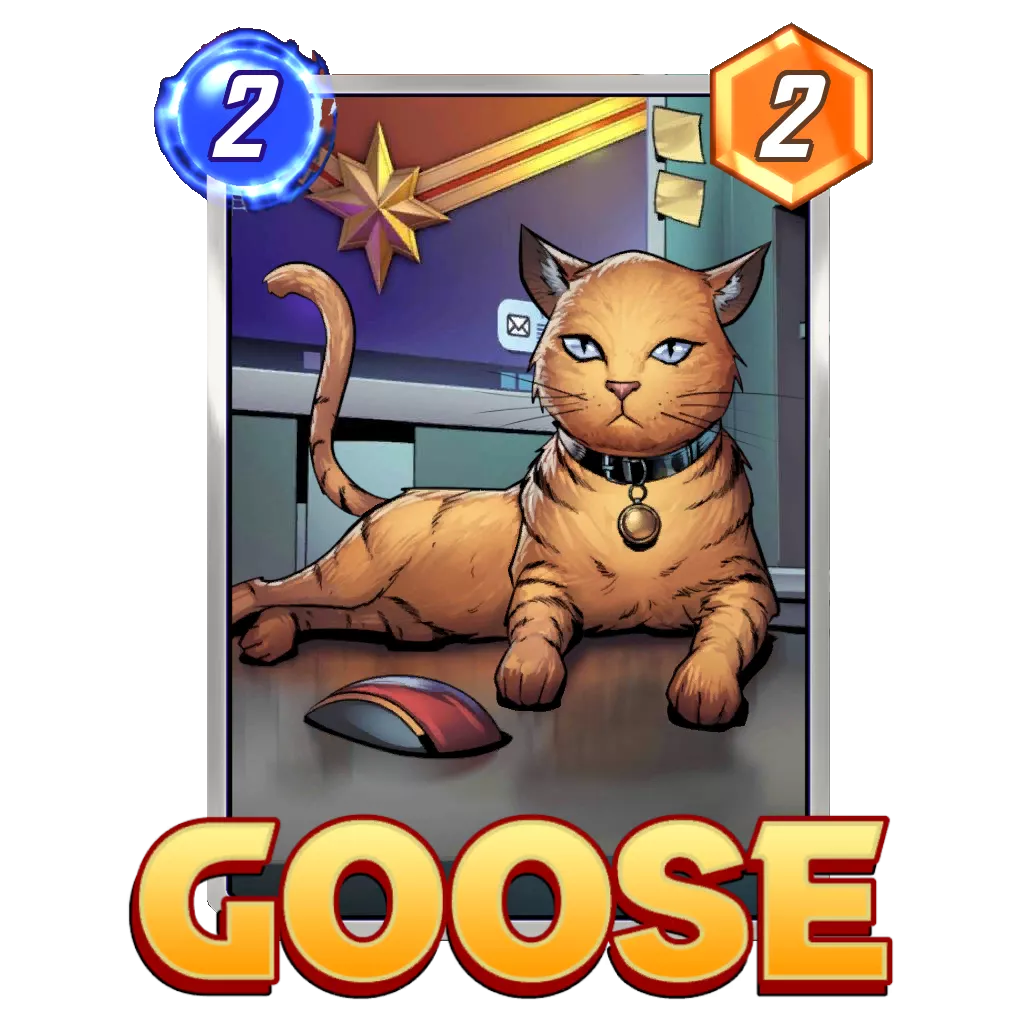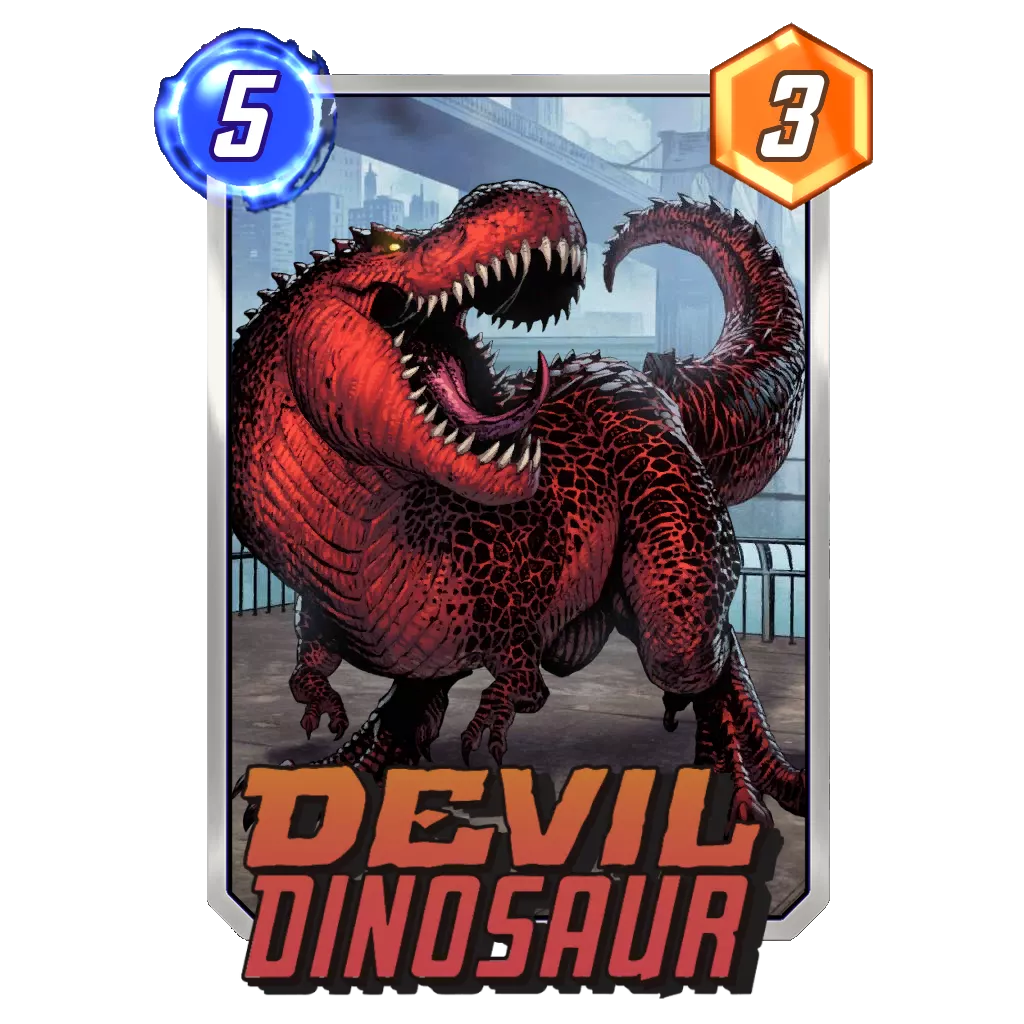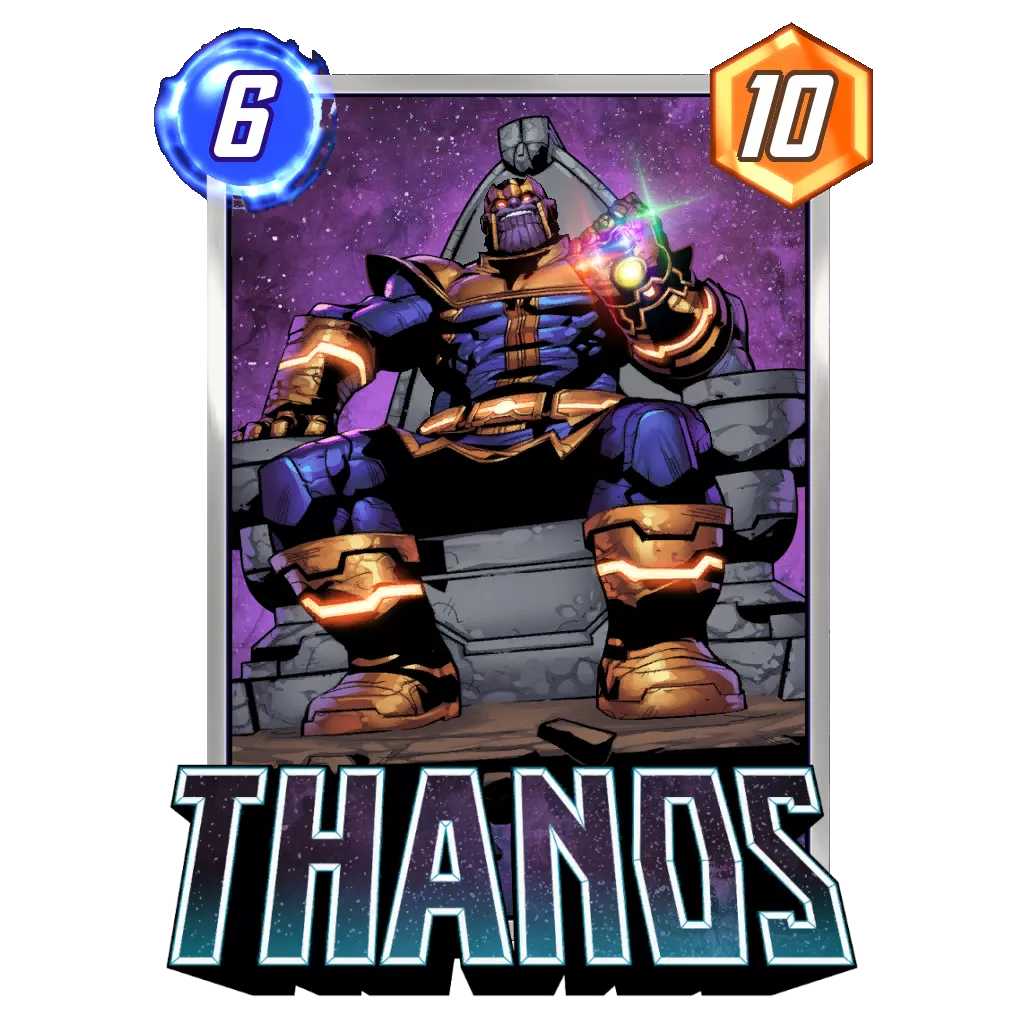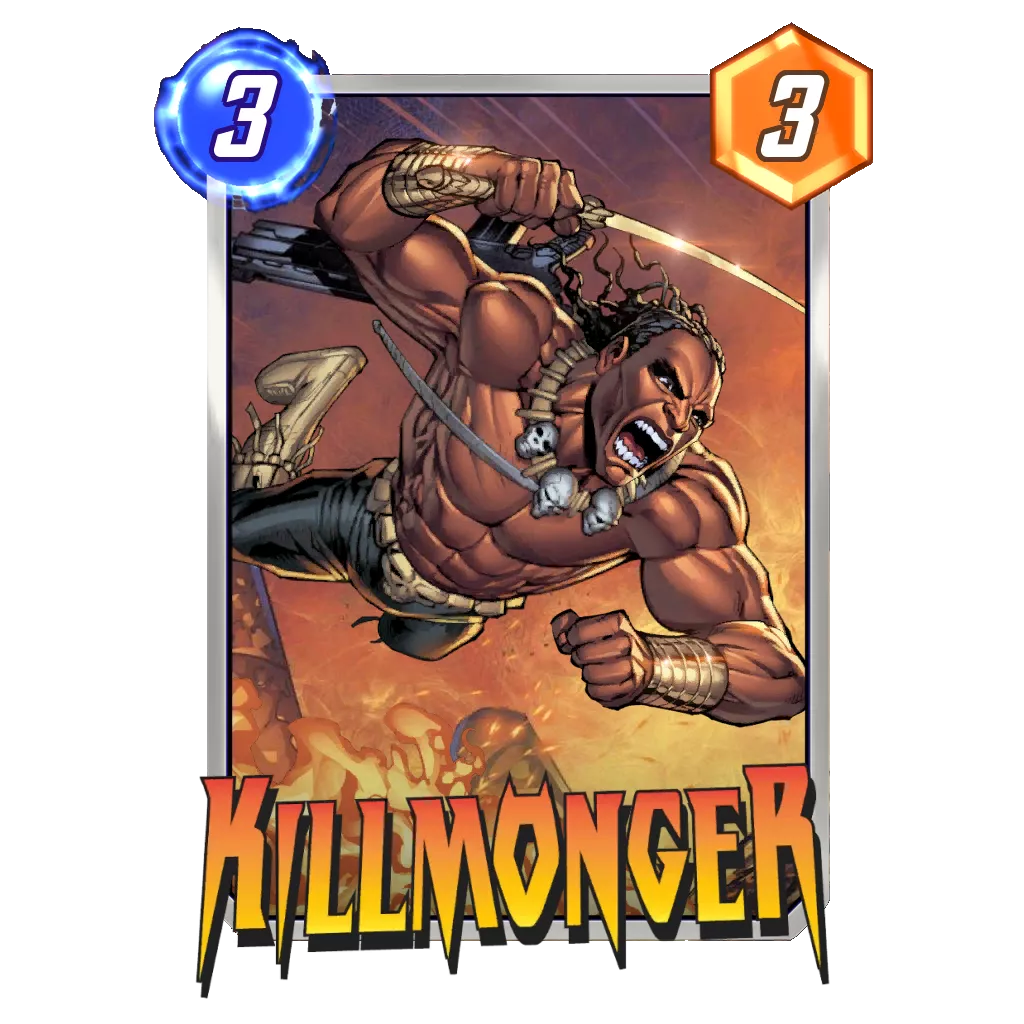Table of Contents
If you have ever played Marvel Snap, you’ve probably heard about or even played the Kazoo archetype. The deck has been the go-to build for most of us at the beginning of the game, and it has followed the journey of many players up the ladder until they start to unlock cards from Series 3. There, with the larger diversity of archetypes, more synergistic strategies become unlocked and Kazoo tends to slip away. The deck doesn’t disappear completely, though, as the extreme flexibility of the archetype has lead to various takes emerging over time.
Inspired by its signature card, Ka-Zar, a Kazoo deck could be defined as a build with lots of 1-cost cards and ways to grow their power. In that regard, a Kazoo deck will usually rely on cheap cards to provide flexibility and manipulate the power of our cards to keep the opponent on their toes.
Over time, a lot of decks took the name “Kazoo” to define themselves. From the first ones back in beta, where Bishop and Angela would feast on the 1-cost cards, to decks with Dracula and Strong Guy where emptying your hand to maximize their power was extremely easy.
Nowadays, the Kazoo archetype isn’t seen as much once players leave Series 2, although Ka-Zar still sees play alongside Thanos and the Infinity Stones in competitive decks. Not including decks with Series 4 and 5 cards at their core, the Kazoocula (Zerocula) build is solid in the Series 3 metagame, and Kazoo in general is amongst the most popular decks before then.
In this guide, let’s explore the chameleon of Marvel Snap, and how you can build your own Kazoo deck. This guide is for all players, whether you just started Marvel Snap and are looking for a deck to climb the ranks or you want to use it with more complex synergies and cards you collected further down the collection track.
Deck Presentation
As said in the intro, a Kazoo deck inherits its name from the card Ka-Zar, meaning any deck with the 4-cost in it could be labelled as Kazoo. In that regard, it is difficult to offer a precise deck list that could be labelled as the “default” Kazoo deck. Here are three decks which could be called Kazoo, all of which include very different cards:
- This is a basic Series 2 Kazoo list aiming to flood the board early in the game before transferring to cards that increase the power of our other cards. Sandman helps prevent an explosive turn six from the opponent when we only plan to use Spectrum.

- This is currently the most common form of Kazoo, also previously known as Zerocula. It tries to abuse the cheap cards to manipulate our hand and make sure Dracula always discards either Red Skull or The Infinaut. Our cheap cards will receive fewer bonuses, but they serve another purpose here: hand flexibility.

- Lastly, we have Thanos pushing the Ongoing theme back into the meta in a deck labelled Thanos Zoo; it’s arguably a Kazoo deck with Thanos lending its name to the archetype. This deck can include more non-1-cost cards as we have the Infinity Stones now.
Deck Concept and Strategy
Because there are so many ways to build a Kazoo deck, I will keep this section quite general. Instead of looking to detail a specific build of Kazoo, let’s explore their common grounds. Indeed, with 1-cost cards at the core of their strategy, Kazoo decks have great upsides with some serious problems they need to avoid running into.
Upsides
- Apart from specific turns where we wish to play our expensive cards (Spectrum, Dracula, Ka-Zar…), Kazoo decks tend to be very flexible in the way they use their energy. Also, if you don’t draw into your expensive cards, you could easily hold your 1-costs and play all of them in the later turns to surprise your opponent.
- In the deck building department, the archetype is also extremely easy to work with since the core could simply be defined by Ka-zar and some 1-cost cards. In the three examples above, we see there is plenty of room to include four or five different cards, if needed.
- Being able to manipulate the power of a card after it is in play is another great upside to Kazoo decks. It allows filling a lane early, something we usually would never want to do, and still be able to compete through buffing these cards later on.
- Although an Ongoing theme seems to be the norm in the archetype, tech cards for specific match ups can be slotted as a finishing touch. Valkyrie, notably, has shown great potential against Shuri Zero.
Downsides
- The biggest red flag with Kazoo decks is the available space on the board; each location can quickly fill up if we aren’t careful. When locations like Savage Land or Central Park are revealed, it might become difficult to maneuver our side of the board.
- Killmonger is another big problem for decks based on 1-cost cards. The possibility of Killmonger being played basically forces the deck to run Armor as a core card most of the time.
- Each card doesn’t represent a lot of points on its own, instead it’s the combinations that lead to being able to compete. As such, if the opponent can break our synergies or move our cards around (with Polaris, for example), it can swiftly ruin our gameplan.
Strategy wise, the Kazoo archetype looks to be proactive and develop its own synergies rather than trying to react to the opponent’s. Even so, due to its initial speed, Kazoo often seizes priority in the first turns and can use cards like Armor and Cosmo to cancel some problematic cards before they reveal, like the Killmonger we mentioned already.
The whole point of the deck is to hide how much power it can develop in order to keep some flexibility and keep the opponent guessing. You still want to be efficient with your energy, though, unless you play Sunspot like the Kazoocula build or, in rare cases, She-Hulk.
Core Cards
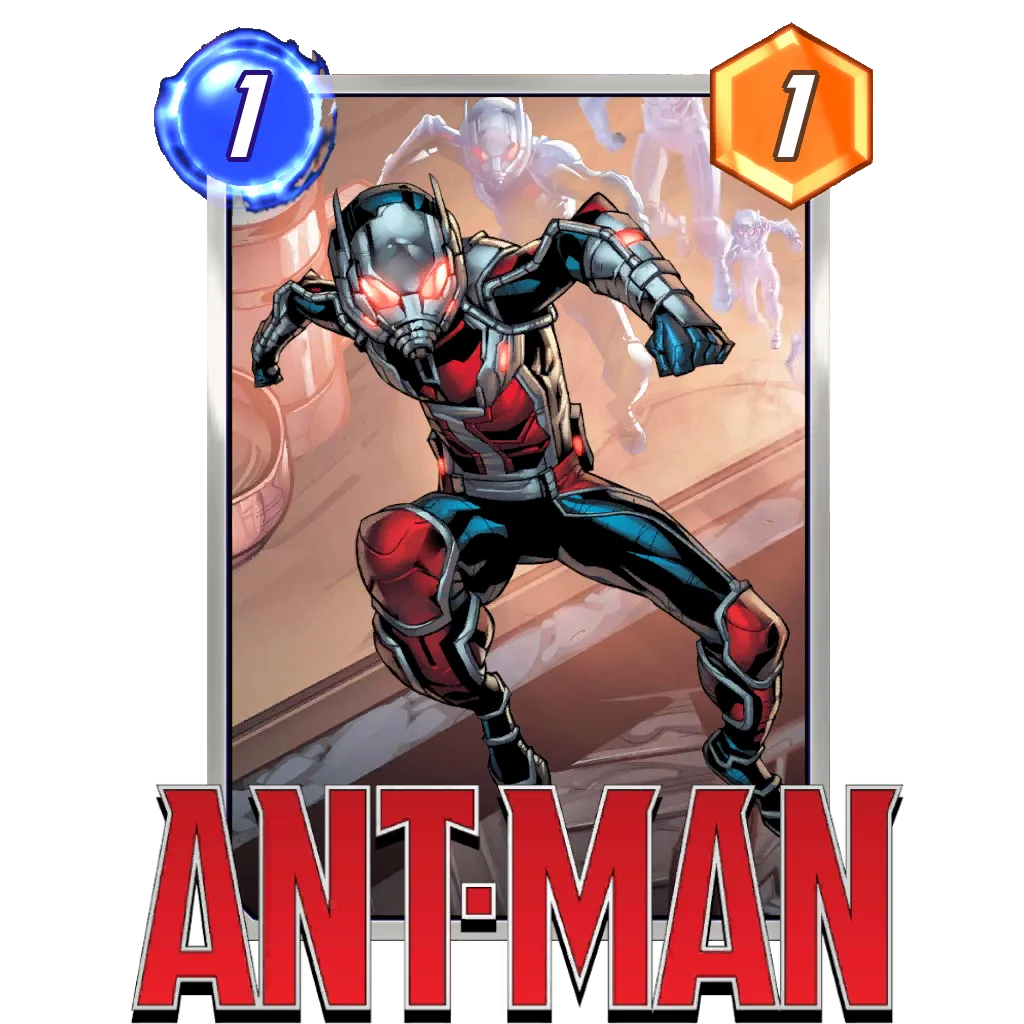










You will obviously play more 1-cost cards than simply
- 1-Cost cards – Usually, Kazoo decks include between four and six 1-cost cards, depending on how much space you have and how much of the deck revolves around this type of card.
- Buff cards – Apart from Ka-Zar, Blue Marvel is a popular inclusion, and even Spectrum if you play a lot of Ongoing cards. Then you can try Captain America, Okoye, Nakia…
- Disruptive cards – Armor and Cosmo are the two most common ones, but Goose, Sandman, and Debrii have made it into some Kazoo builds. Iceman and Korg pull double duty as disruptive 1-cost cards.
- Cards directly benefiting from your game plan – Angela and Bishop are great examples of this, and the two have spent a lot of time in the archetype.
- High scoring cards – Since we mostly run cheap, flexible cards, it can sometimes be a good idea to pack a heavy hitter or two in the deck as a way to score points without needing more than one space on a location. In that category, we might try Iron Man, She-Hulk, Maximus, or Wolfsbane. We could also include either of the popular choices in the Kazoocula build: Red Skull or The Infinaut.
Cards Substitutions
The Kazoo archetype doesn’t really have a precise deck list, so you can be very creative when it comes to changing cards you don’t have or don’t like in a deck. Keep in mind the reason they are included in the deck and the general direction the build is going towards. Then, simply find a card that either works better for you in that slot or opens new avenues for the deck.
Here are a few examples of uncommon inclusion that still make sense:
Aero
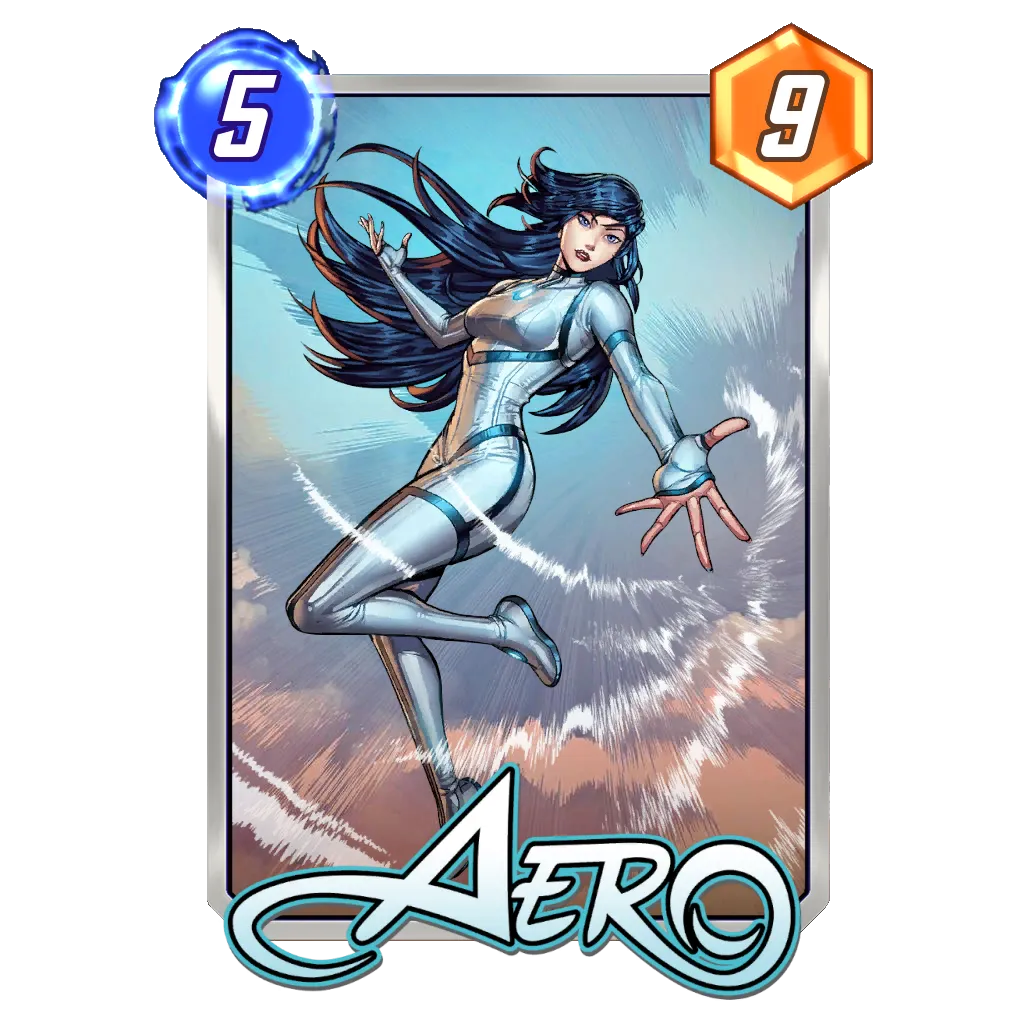









One of the best cards in the game with priority, she fits perfectly in a deck designed to have priority.
Beast
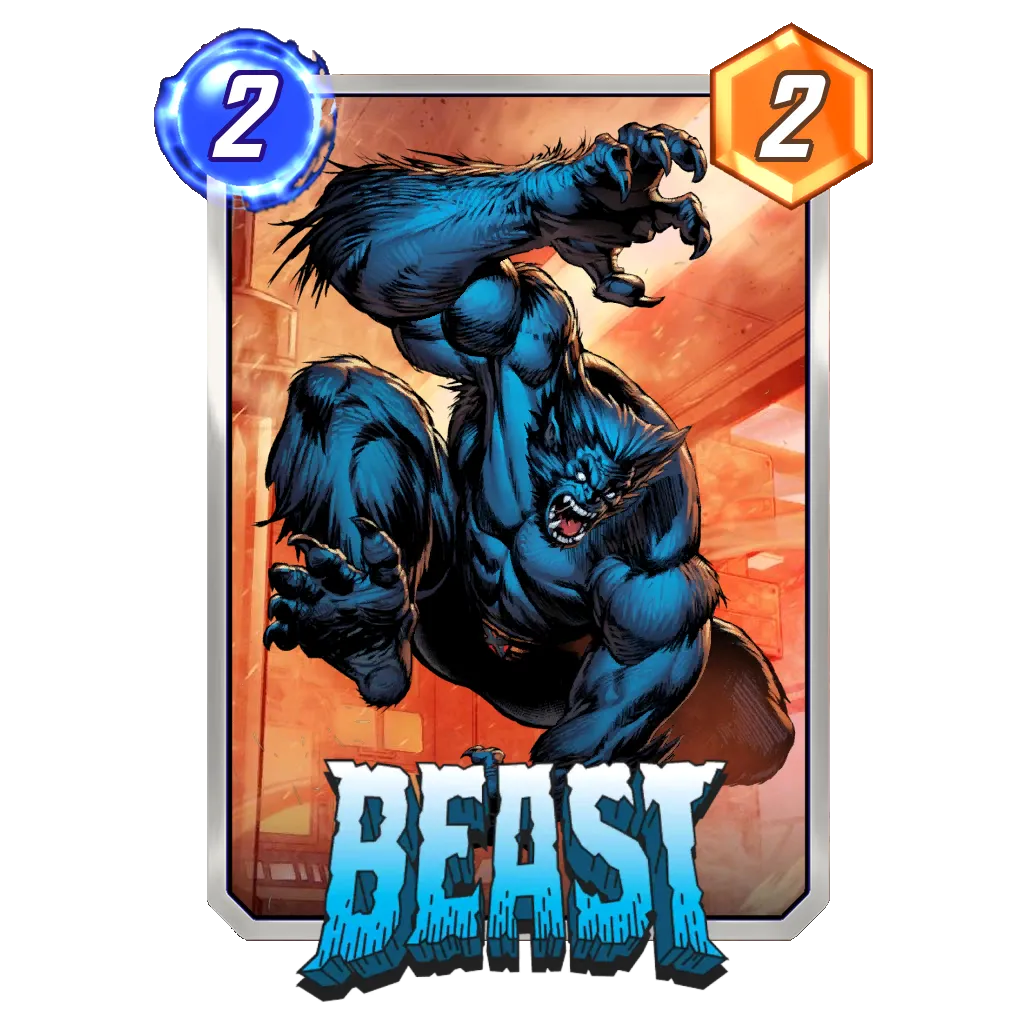









Get some 1-cost cards in hand and replay them for free on turn six, once Killmonger isn’t a menace anymore (or simply to surprise your opponent).
Hulkbuster
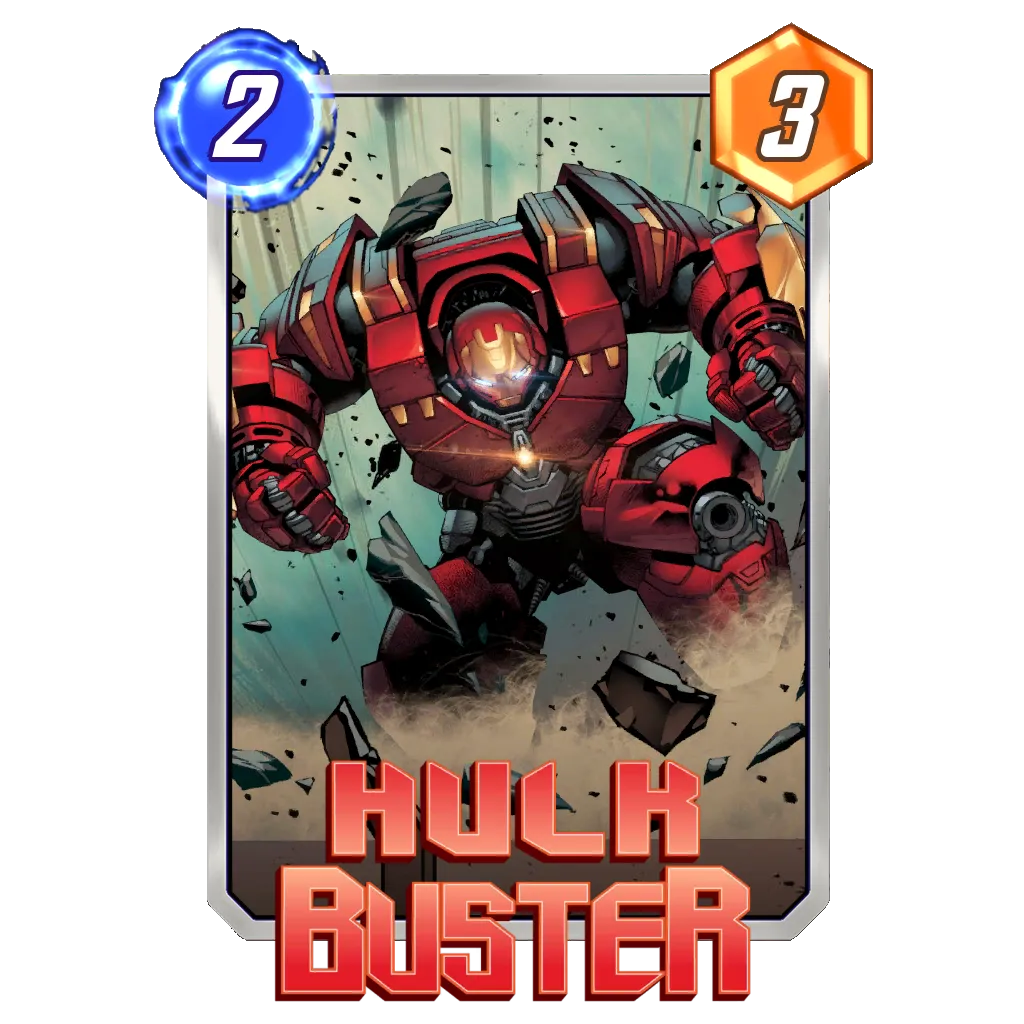






Worried you won’t have enough space available? Here is a card that doesn’t take any space!
Strong Guy
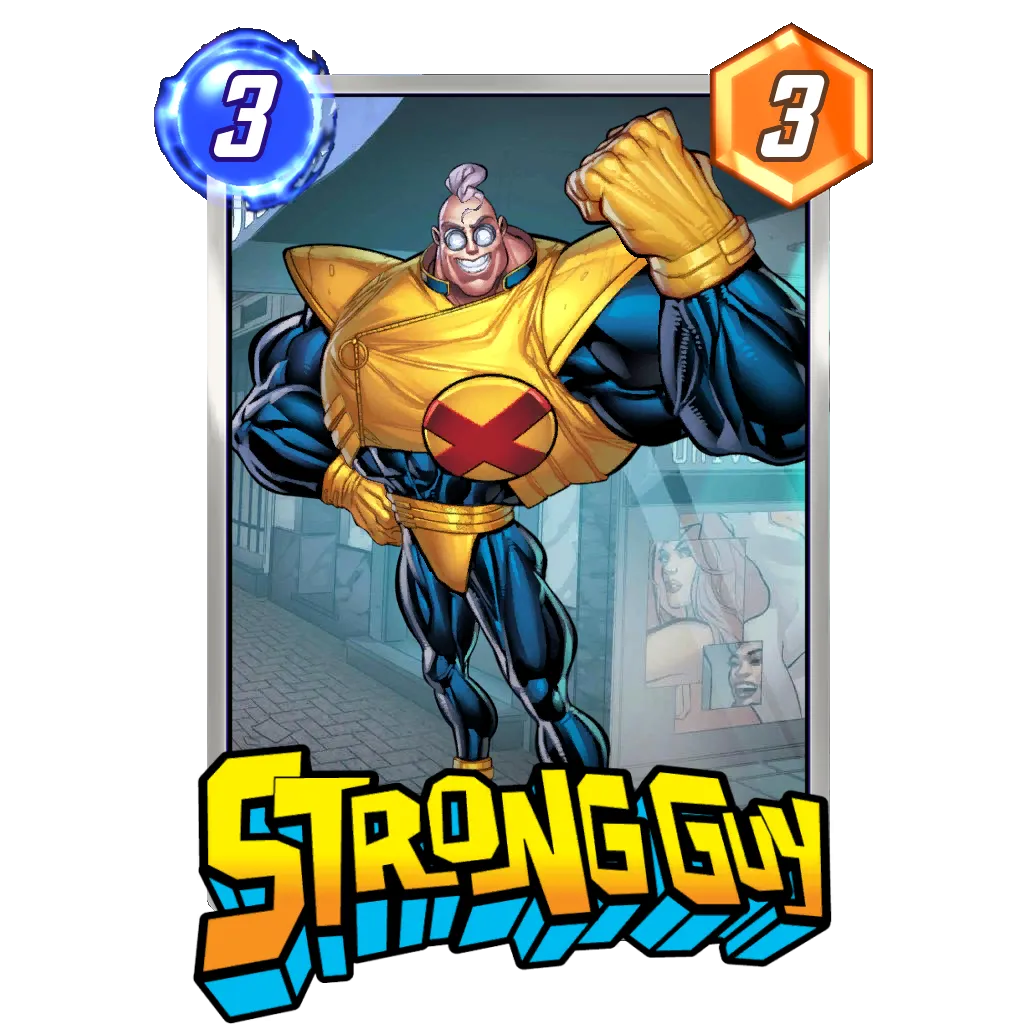





With a deck so cheap, emptying our hand shouldn’t difficult. Pursuing that goal further opens playing some discard abilities like Blade, a good 1-cost card if we can benefit from the discard.
Valkyrie
Tired of your 1-cost cards not being able to compete with more expensive cards? Valkyrie puts everyone at the same power, no matter the cost.
Storm


















Should be quite easy for you to fill a location quickly and make sure you’re ahead by turn four. Plus, you can still impact it with your buffs.
Snap and Retreat
The Kazoo deck isn’t necessarily one that always seeks to see the entirety of the game. Sometimes it might be better to get the opponent to retreat as you storm out of the gate rather than go the full distance. In that aspect, it is extremely important to visualize how many points you will be able to develop with your hand, and whether you have your high scoring cards or just the 1-costs.
Basically, a game can take four different routes for a Kazoo deck:
- You don’t get your 1-cost cards early → Try to play your Ongoing cards and aim for an explosive turn six, or stay close to your retreat button.
- You get the 1-cost cards but no follow up → You will look super strong in the early turns, but the second part of the game will be a bit lackluster. In this case, either snap very early to draw a quick retreat or be careful and see if you get some good draws down the line.
- You get the 1-cost cards and the disruptive cards → Take priority and then focus on disrupting your opponent’s game plan. You should snap based on your read of the match: if you see you have a nice counter, it could be worth snapping before it happens so they don’t retreat immediately.
- You get the 1-cost cards and the buff cards → This is the basic proactive scenario for Kazoo. Try to imagine what your opponent could do to counter your plans and which lanes you should focus your efforts on. Snaps are purely situational in this scenario.
Locations
There aren’t many locations that are immediately worthy of a snap, but Kazoo has quite a lot of positive locations – especially those that you typically fight for early on:

- Asgard → Easy two bonus cards
- The Raft → Easy 6-cost card for free, this could be worth a snap
- Ego → Funnily enough, because most of your cards have Ongoing effects, Ego can’t really mess up with them as long as they get played
- Gamma Lab → Get three Hulks and then play Armor or Cosmo to protect them
- Kyln → Should take this one against most decks
- Mindscape → Play all your cards and give your opponent nothing
- Muir Island → Fill it quickly and watch it grow
- Morag → No problem playing there on most turns
- The Big House → We didn’t intend playing 4-, 5-, or 6-costs anyway
- TVA → You could snap this one
As good as the long list of positive locations looks, there are some difficult ones to overcome. And you might want to consider Scarlet Witch for Featured and Hot Locations days:



- Necrosha, Negative Zone, Sewer System → Need a big card to play to compete
- Plunder Castle → Can’t play there
- Shuri's Lab -> Big cards tend to perform better here
- Sinister London -> Opponent can match our numbers now
- Crimson Cosmo → The Big House but in a bad way
- The Nexus → Difficult to compete on one location if it comes down to this one only
- The Space Throne → We want to play multiple cards
- Worldship → Why aren’t we allowed to play cards?!
Matchups
There are several types of matchups for the Kazoo archetype, and it can be difficult to break them down as there are so many ways to build a Kazoo deck. However, there are some pointers which should give you a decent idea of potential matchups:
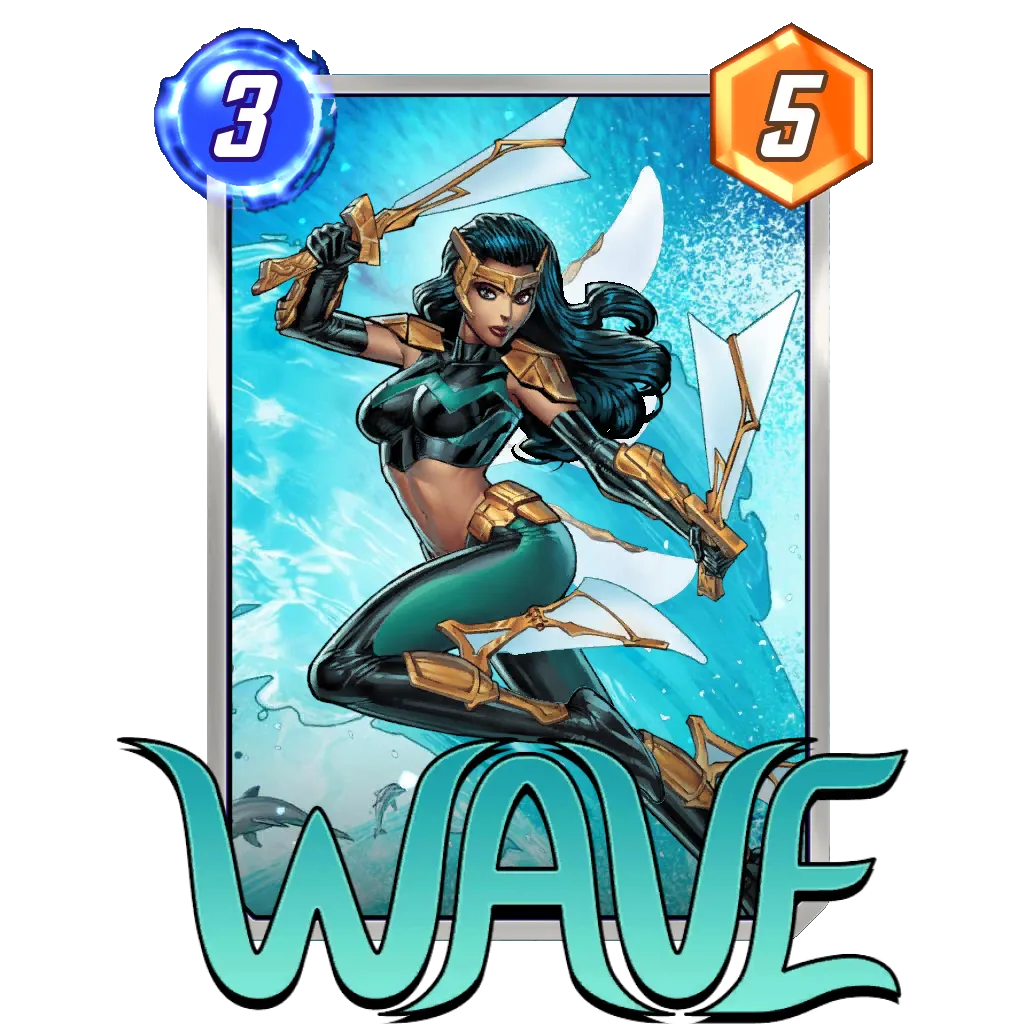







- Destroy decks usually play Killmonger, which is bad for us. They can also play Wave, which is another bad card to face. Stay safe against these decks, even with Armor.
- Combo or highly synergistic decks can be mitigated with Cosmo, Iceman, and Sandman, so if you have those disruption tools and a good read on the opposing combo, feel free to snap.
- Points based decks like other Ongoing builds are difficult to beat. They will usually offer Kazoo a location, but you have to be very strong on the other one you covet, like over 20 power strong minimum.
Turn-by-Turn Breakdown
Because the Kazoo archetype is so flexible, a turn-by-turn breakdown doesn’t feel as relevant as with other decks. Basically, the deck usually has a four flexible and two rigid turns during a match, but it can decide when these rigid turns will happen.
For example, you know you will want to play Ka-Zar at some point, or Blue Marvel, maybe Spectrum. These expensive cards will represent your rigid turns where you are unlikely to do much else outside playing said card. Once you have identified which turn you want to play this card, and whether it is your only rigid turn or if you will have several of them (you could play all three cards in a row), it will let you know which turns can be flexible. In those flexible turns, you should find the other cards you want on the table and how they contribute to the game plan you built around your rigid turns.
A typical game of Kazoo will see Turns 4 and 5 as the rigid ones (Ka-Zar, Blue Marvel, Sandman, Dracula…), and the first three turns plus the final one will be the flexible ones. Lastly, because your flexible turns will typically happen before your rigid turns, you want to think about space on each location and where you might want to play your expensive cards.
Closing Words
I wasn’t really sure what the best way to present an archetype with so many variants to it was, and, ultimately, only four or five cards are worth calling the core of Kazoo. Having one guide covering the concept felt like it made the most sense as it is also the way one should approach the archetype in the end: extremely flexible, but true to its original concept. Indeed, whether you are playing a Series 2 only deck, the more popular Kazoocula deck, or one of the strong metagame decks like Thanos Ongoing, you will ask yourself similar questions during a game.
From managing the space you have on each location to playing around Killmonger, and even looking to invest your power in the right place at the right time, Kazoo is an archetype which truly deserves its title of Chameleon of Marvel Snap. It is often seen as the beginner’s archetype since most people have Ka-Zar plus a lot of the strong 1-cost cards, such as
For these reasons, I felt like a more general approach that covered the important concepts of any Kazoo build would make more sense for a guide. If anything didn’t feel clear, or something wasn’t precise enough for your taste, feel free to reach out with any questions. You can find us on the Marvel Snap Zone Discord, or contact me directly on Twitter.
Good Game Everyone.

⭐ Premium
Enjoy our content? You can Support Marvel Snap Zone and your favorite content creators by subscribing to our Premium community! Get the most of your Marvel Snap experience with the following perks for paid membership:
- No ads: Browse the entire website ad-free, both display and video.
- Exclusive Content: Get instant access to all our Premium articles!
- Meta Reports: Exclusive daily meta reports, such as the Ultimate Card Metrics Report, Top 10 Decks of the Day, Top 30 Cards, and Top Card Pairs tailored for you!
- Team Coaching: Join our free weekly team coaching call sessions on the Discord server. Claim your Premium role and gain access to exclusive channels where you can learn and discuss in real time!
- Premium Dashboard: Get full instant access to the member-only dashboard, the all-in-one page for all your benefits.
- Support: All your contributions get directly reinvested into the website to increase your viewing experience! You get also get a Premium badge and border on your profile.
- Special offer: For a limited time, use coupon code SBYREX4RL1 to get 50% off the Annual plan!
























